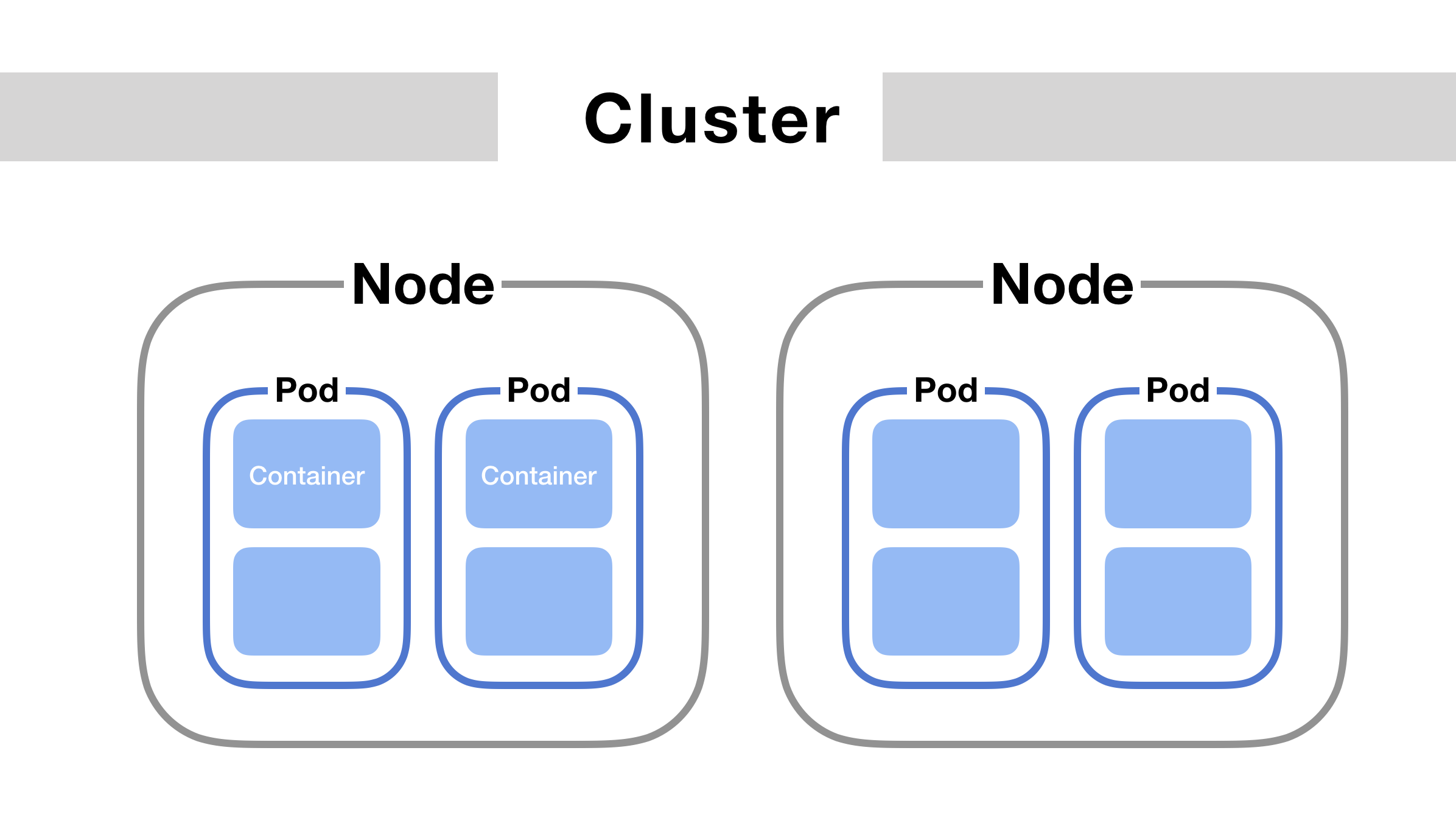0x00 前言 先上定义,Projected Volume。译作“投射数据卷”
在 Kubernetes 中,有几种特殊的 Volume,其意义不是为了存放容器里的数据,也不是用来进行Container和宿主机之间的数据交换。这些特殊 Volume 的作用,是为容器提供预先定义好的数据。所以,从容器的角度来看,这些 Volume 里的信息就是仿佛是被 Kubernetes“投射”(Project)进入容器当中的。这正是 Projected Volume 的含义。
一共四种:
创建 1 2 3 4 5 6 7 8 9 10 11 12 13 14 15 16 17 18 19 20 21 22 23 24 25 26 27 28 29 30 31 32 方法一 $ cat ./username.txt admin $ cat ./password.txt c1oudc0w! $ kubectl create secret generic user --from-file=./username.txt $ kubectl create secret generic pass --from-file=./password.txt $ kubectl get secrets NAME TYPE DATA AGE user Opaque 1 51s pass Opaque 1 51s 方法二 $ echo -n 'admin' | base64 YWRtaW4= $ echo -n 'cloudc0w!' | base64 Y2xvdWRjMHch $ cat secrect-create.yml apiVersion: v1 kind: Secret metadata: name: mysecret type : Opaquedata: user: YWRtaW4= pass: Y2xvdWRjMHch $ kubectl apply -f secrect-create.yml
调用 1 2 3 4 5 6 7 8 9 10 11 12 13 14 15 16 17 18 19 20 21 22 23 24 25 26 27 28 29 30 31 32 33 34 $ cat secrect-call.yml apiVersion: v1 kind: Pod metadata: name: test -projected-volume spec: containers: - name: test -secret-volume image: busybox args: - sleep - "86400" volumeMounts: - name: mysql-cred mountPath: "/projected-volume" readOnly: true volumes: - name: mysql-cred projected: sources: - secret: name: user - secret: name: pass $ kubectl exec -it test -projected-volume -- /bin/sh $ ls /projected-volume/ username.txt password.txt $ cat /projected-volume/username.txt root $ cat /projected-volume/password.txt cloudc0w!
0x02 ConfigMap 与Secret类似,ConfigMap存储的键值对在于无加密。
创建 1 2 3 4 5 6 7 8 9 10 11 12 13 14 15 16 17 18 19 20 21 22 23 24 25 26 27 28 29 30 31 32 33 34 35 36 37 38 39 40 41 42 43 44 45 46 47 48 49 50 51 52 53 54 55 方法一 $ cat configmap-create.yml apiVersion: v1 kind: ConfigMap metadata: name: game-demo data: player_initial_lives: "3" ui_properties_file_name: "user-interface.properties" game.properties: | enemy.types=aliens,monsters player.maximum-lives=5 user-interface.properties: | color.good=purple color.bad=yellow allow.textmode=true $ kubectl apply -f configmap-create.yml 方法二 $ cat game.properties enemy.types=aliens,monsters player.maximum-lives=5 $ cat user-interface.properties color.good=purple color.bad=yellow allow.textmode=true $ kubectl create configmap game-demo --from-file=game.properties $ kubectl create configmap game-demo --from-file=user-interface.properties $ kubectl get configmaps game-demo -o yaml apiVersion: v1 data: game.properties: "enemy.types=aliens,monsters\nplayer.maximum-lives=5 \n" player_initial_lives: "3" ui_properties_file_name: user-interface.properties user-interface.properties: "color.good=purple\ncolor.bad=yellow\nallow.textmode=true \ \n" kind: ConfigMap metadata: annotations: kubectl.kubernetes.io/last-applied-configuration: | {"apiVersion" :"v1" ,"data" :{"game.properties" :"enemy.types=aliens,monsters\nplayer.maximum-lives=5 \n" ,"player_initial_lives" :"3" ,"ui_properties_file_name" :"user-interface.properties" ,"user-interface.properties" :"color.good=purple\ncolor.bad=yellow\nallow.textmode=true \n" },"kind" :"ConfigMap" ,"metadata" :{"annotations" :{},"name" :"game-demo" ,"namespace" :"default" }} creationTimestamp: "2022-02-09T10:16:28Z" name: game-demo namespace: default resourceVersion: "4630695" uid: f8039b07-4c1c-47d4-aecf-09c2031b16c7
调用 1 2 3 4 5 6 7 8 9 10 11 12 13 14 15 16 17 18 19 20 21 22 23 24 25 26 27 28 29 30 31 32 33 34 35 36 37 38 39 40 41 42 43 44 45 46 47 48 49 50 $ cat configmap-create.yml apiVersion: v1 kind: Pod metadata: name: configmap-demo-pod spec: containers: - name: demo image: alpine command : ["sleep" , "3600" ] env: - name: PLAYER_INITIAL_LIVES valueFrom: configMapKeyRef: name: game-demo key: player_initial_lives - name: UI_PROPERTIES_FILE_NAME valueFrom: configMapKeyRef: name: game-demo key: ui_properties_file_name volumeMounts: - name: config mountPath: "/config" readOnly: true volumes: - name: config configMap: name: game-demo items: - key: "game.properties" path: "game.properties" - key: "user-interface.properties" path: "user-interface.properties" [root@storage-k3sm configMap] / /config game.properties user-interface.properties /config enemy.types=aliens,monsters player.maximum-lives=5 /config color.good=purple color.bad=yellow allow.textmode=true
0x03 Downward API 直接让Pod内获取到对象本身的信息。
创建+调用 1 2 3 4 5 6 7 8 9 10 11 12 13 14 15 16 17 18 19 20 21 22 23 24 25 26 27 28 29 30 31 32 33 34 35 36 37 38 39 40 41 42 43 44 45 46 47 48 $ cat dapi-create.yml apiVersion: v1 kind: Pod metadata: name: kubernetes-downwardapi-volume-example labels: zone: us-est-coast cluster: test -cluster1 rack: rack-22 annotations: build: two builder: john-doe spec: containers: - name: client-container image: k8s.gcr.io/busybox command : ["sh" , "-c" ] args: - while true ; do if [[ -e /etc/podinfo/labels ]]; then echo -en '\n\n' ; cat /etc/podinfo/labels; fi ; if [[ -e /etc/podinfo/annotations ]]; then echo -en '\n\n' ; cat /etc/podinfo/annotations; fi ; sleep 5; done ; volumeMounts: - name: podinfo mountPath: /etc/podinfo volumes: - name: podinfo downwardAPI: items: - path: "labels" fieldRef: fieldPath: metadata.labels - path: "annotations" fieldRef: fieldPath: metadata.annotations $ kubectl apply -f dapi-create.yaml $ kubectl logs kubernetes-downwardapi-volume-example cluster="test-cluster1" rack="rack-22" zone="us-est-coast" build="two" builder="john-doe"
除了metadata.labels 还有以下字段样例,最新官网自查。
Text 1 2 3 4 5 6 7 8 9 10 11 12 13 14 15 16 17 18 1. 使用fieldRef可以声明使用: spec.nodeName - 宿主机名字 status.hostIP - 宿主机IP metadata.name - Pod的名字 metadata.namespace - Pod的Namespace status.podIP - Pod的IP spec.serviceAccountName - Pod的Service Account的名字 metadata.uid - Pod的UID metadata.labels['<KEY>'] - 指定<KEY>的Label值 metadata.annotations['<KEY>'] - 指定<KEY>的Annotation值 metadata.labels - Pod的所有Label metadata.annotations - Pod的所有Annotation 2. 使用resourceFieldRef可以声明使用: 容器的CPU limit 容器的CPU request 容器的memory limit 容器的memory request
官网对其作用说得很好。
对于容器来说,有时候拥有自己的信息是很有用的,可避免与 Kubernetes 过度耦合。 Downward API 使得容器使用自己或者集群的信息,而不必通过 Kubernetes 客户端或 API 服务器来获得。
一个例子是有一个现有的应用假定要用一个非常熟悉的环境变量来保存一个唯一标识。 一种可能是给应用增加处理层,但这样是冗余和易出错的,而且它违反了低耦合的目标。 更好的选择是使用 Pod 名称作为标识,把 Pod 名称注入这个环境变量中。
0x04 ServiceAccountToken 其实是Secret的变种,专门用于K8s系统内置的服务账户凭证。
调用(InClusterConfig 默认情况下会把相应的密钥信息挂载进容器里
1 2 3 4 5 6 7 8 9 10 11 12 13 14 15 16 17 18 19 20 21 22 23 24 25 26 27 28 29 30 31 ... Containers: nginx-container: ... Mounts: /usr/share/nginx/html from shared-data (rw) /var/run/secrets/kubernetes.io/serviceaccount from kube-api-access-fwlgc (ro) debian-container: ... Mounts: /pod-data from shared-data (rw) /var/run/secrets/kubernetes.io/serviceaccount from kube-api-access-fwlgc (ro) ... Volumes: ... kube-api-access-fwlgc: Type: Projected (a volume that contains injected data from multiple sources) TokenExpirationSeconds: 3607 ConfigMapName: kube-root-ca.crt ConfigMapOptional: <nil> DownwardAPI: true serviceaccount ca.crt namespace token
0x05 总结 简单总结了几种Pod的Projected Volume的特点,适用于不同需求,与直接使用env传递最大的区别在于可以自动更新维护。做到了避免过度耦合和集群管理的平衡。
